Traditionally, restricting content in WordPress has meant using a WordPress membership plugin. However, this isn’t always the right solution for users who need a simple way to restrict content in your website.
For example, if you want to …
- Share portfolios with selected clients,
- Keep your site secure from bots, or
- Offer different types of content to different registered users
… you’ll need a way to restrict access to content the simplest way possible.
In this article, we’ll step through six different ways to restrict access to content in WordPress using the Passster plugin. Along the way, we’ll cover different scenarios for when you should use each type of content protection.
Table of Contents
#1: Simple Password Protection
With Passster, simple password protection is available out of the box with the free version of the plugin. Put simply, you can use a single password to restrict user access to your posts and pages. This is the simplest way to restrict access to content in WordPress.
You should use this type of content protection if:
- You’re looking for a simple solution for content protection.
- You only have a handful of people you’d like to grant access to.
For example, if you’re a photographer or freelancer, you might need to provide selected clients access to your online portfolio. Instead of using a complex membership plugin, you can simply password protect the portfolio section on your website using a single password. This way, your clients can enter the password to view your portfolio.
Passster
Protect your entire website, entire pages, or just parts of your content with one or more passwords.
In addition to this, using a single password to restrict access to content is also a viable option if you want to grant people access to member’s only content.
Here’s what you need to do to set this up in Passster:
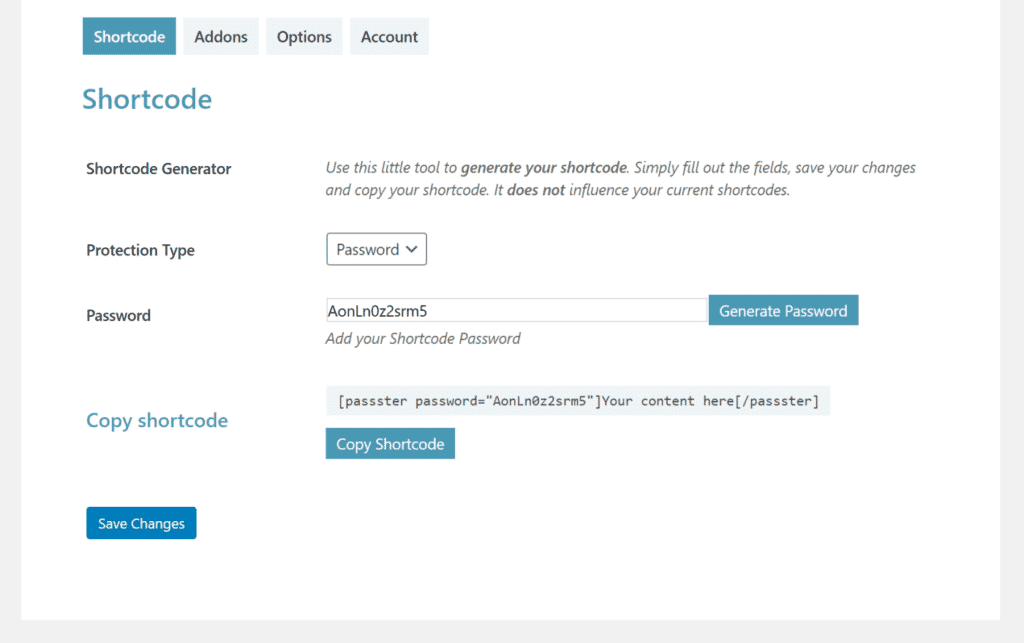
Go to Settings > Passster from the WordPress admin panel and click on the Shortcode tab. Configure the following settings:
- Set the Protection Type option to Password.
- Enter a password in the Password field or use the Generate Password button to automatically generate a strong password.
Click the Save Changes button.
A shortcode will automatically be generated for you. Use this in posts or pages to restrict access to content.
#2: CAPTCHA
In some cases, you might need to protect your website content against bots and spam accounts. Passster makes this easy with its CAPTCHA feature. Once you have everything set up, visitors will see a simple CAPTCHA box on the front-end. They’ll be prompted to complete the CAPTCHA to view the content.
This is the easiest way to keep your website and content secure from bots and scrapers. It works for all sorts of content – including online forms.
Here’s what you need to do to set this up in Passster:
Go to Settings > Passster from the WordPress admin panel and click on the Addons tab. Activate the Captcha option.
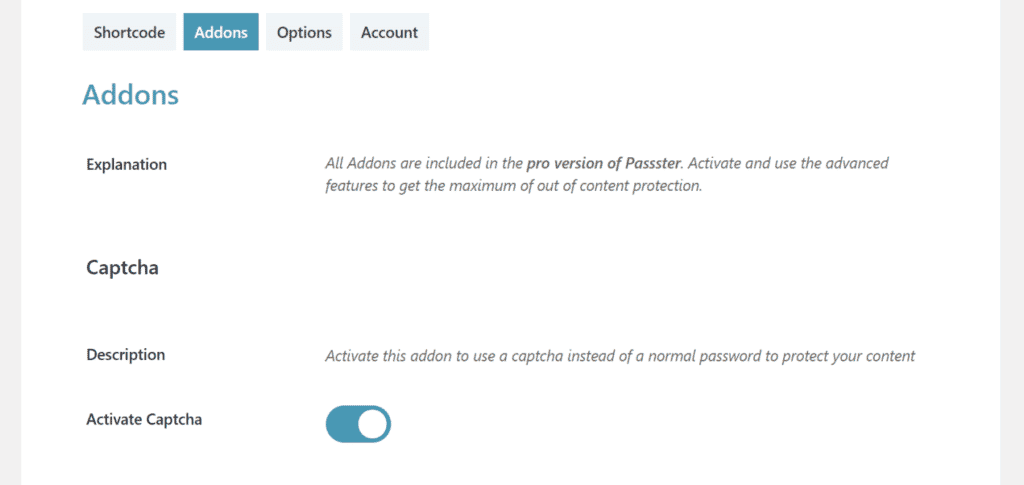
Click the Save Changes button at the bottom of the screen. Head over to the Captcha tab and configure the following settings:
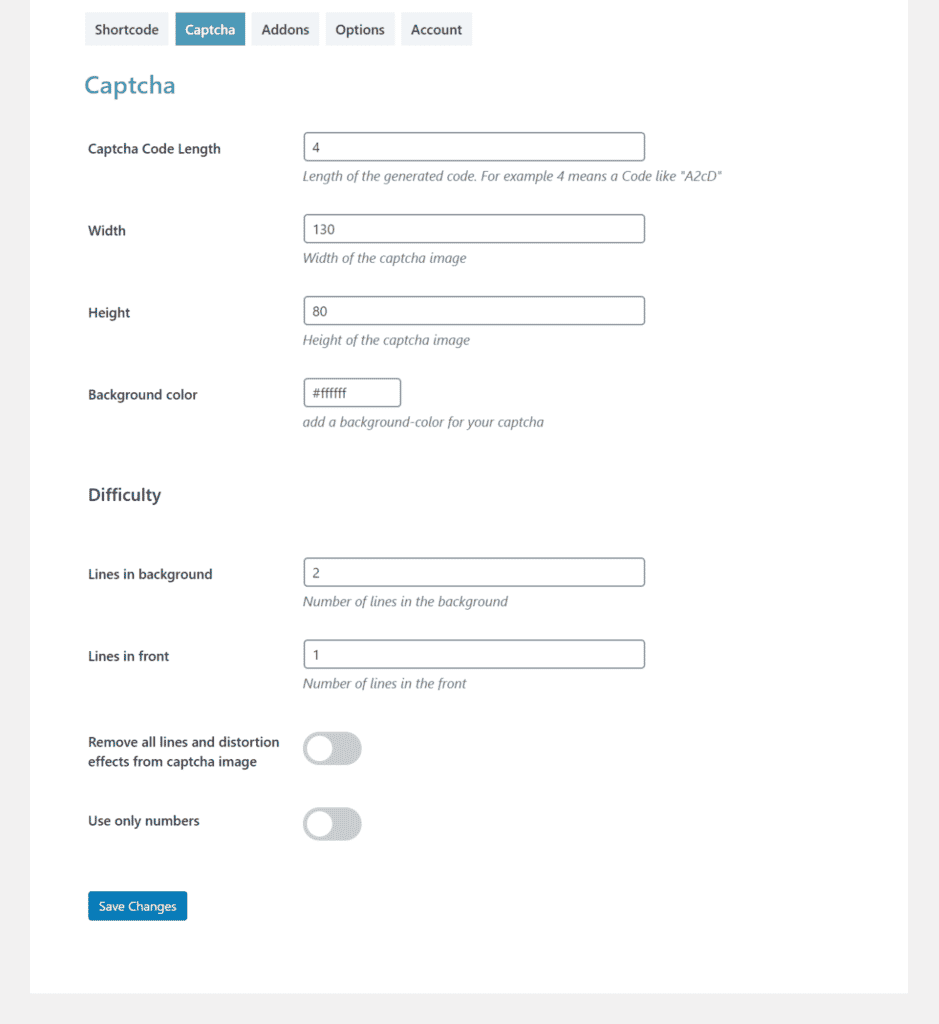
- Set a Captcha Code Length which defines the length of the generated code. This is the number of letters and numbers in the CAPTCHA image.
- Set a Width and Height of the CAPTCHA image for your site’s front-end.
- Choose a Background color for the CAPTCHA.
- Decide how difficult you’d like to make the CAPTCHA by setting the Lines in background and Lines in front value. The higher the value; the more difficult the CAPTCHA is to read.
In addition to this, you can make the CAPTCHA easy to read by choosing to remove all lines and distortion effects from the image. And, you can choose to use only numbers in the CAPTCHA image.
Click the Save Changes button.
Finally, go to the Shortcode tab and set the Protection Type option to Captcha. Once you click the Save Changes button, a shortcode will automatically be generated for you. Use this in posts or pages to restrict access to content.

#3: Multiple Passwords
If you need to grant lots of different types of users (or members) access to exclusive content, you might consider setting up multiple passwords. Passster lets you restrict access to the same piece of content using multiple passwords.
This is great for when you have a segmented list of contacts such as Beginners and Advanced users. Or, if you sell similar products to different types of clients such as B2B buyers and Wholesale customers.
Here’s what you need to do to set this up in Passster:
Go to Settings > Passster from the WordPress admin panel and click on the Addons tab. Activate the Multiple Passwords option.

Click the Save Changes button.
Head over to the Passwords Lists tab and click the Add new Password List button. Give the password list a title (like Portfolio Access) and enter a comma-separated list of passwords to the textbox.
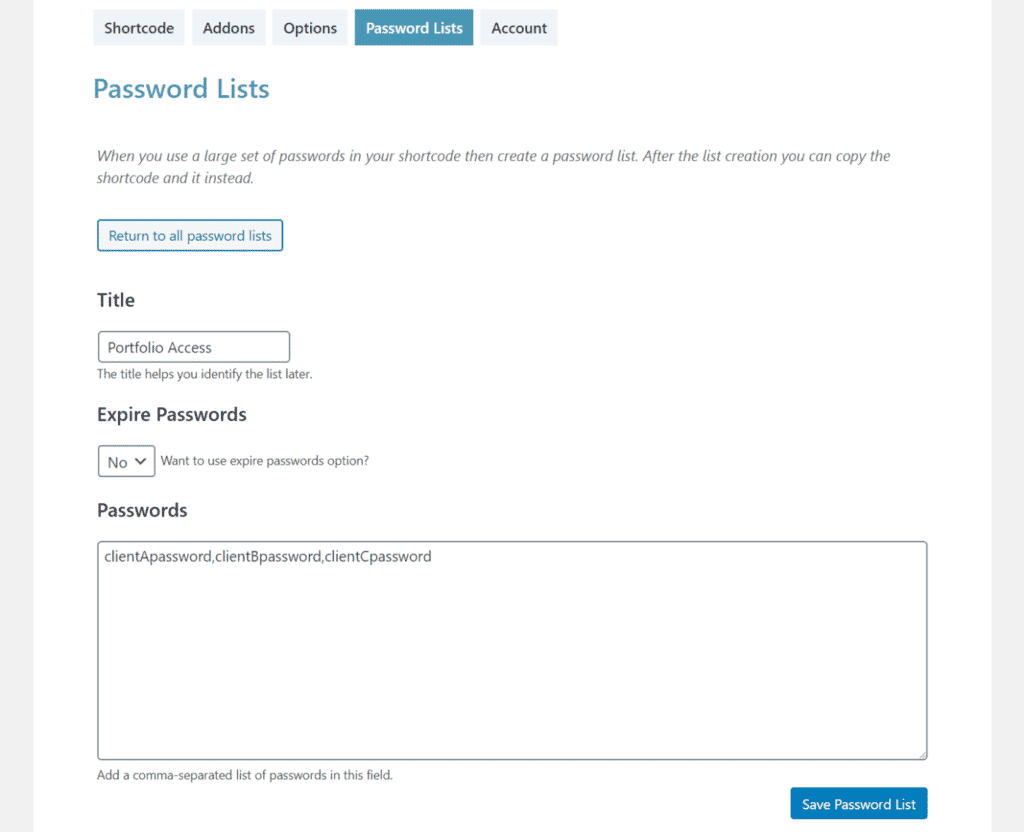
Note: You can also choose to expire passwords by setting the Expire Passwords option to Yes. These are one-time passwords that are automatically removed from the password list after they’re used.
Click the Save Password List button.
Finally, go to the Shortcode tab and set the Protection Type option to Multiple Passwords. Use the Password List dropdown to select the password list you just created i.e. Portfolio Access.
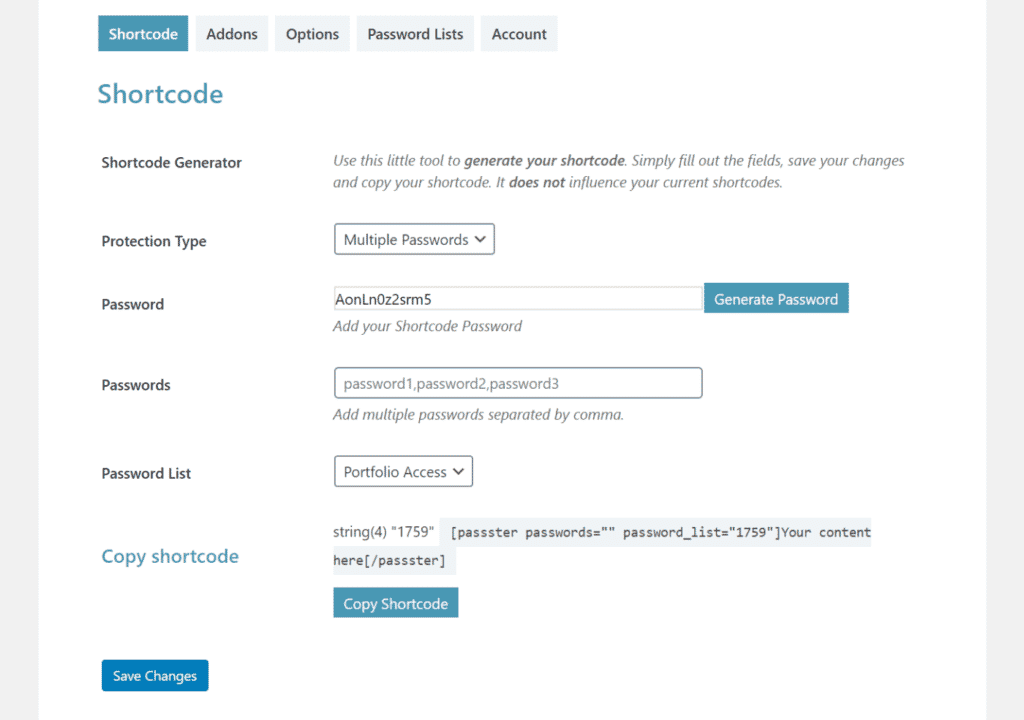
Once you click the Save Changes button, a shortcode will automatically be generated for you. Use this in posts or pages to restrict access to content.

#4: User Role Protection
Passster also gives you an option to grant access to certain user roles (and specific users) only. This is great for when people have registered for user accounts on your website.
Here’s what you need to do to set this up in Passster:
Go to Settings > Passster from the WordPress admin panel and click on the Addons tab. Activate the Users option.

Click the Save Changes button.
Go to the Shortcode tab and add a comma-separated list of user roles you’d like to grant access to in the User Groups field. Alternatively, you can add a comma-separated list of specific users that you’d like to grant access to in the Users field.
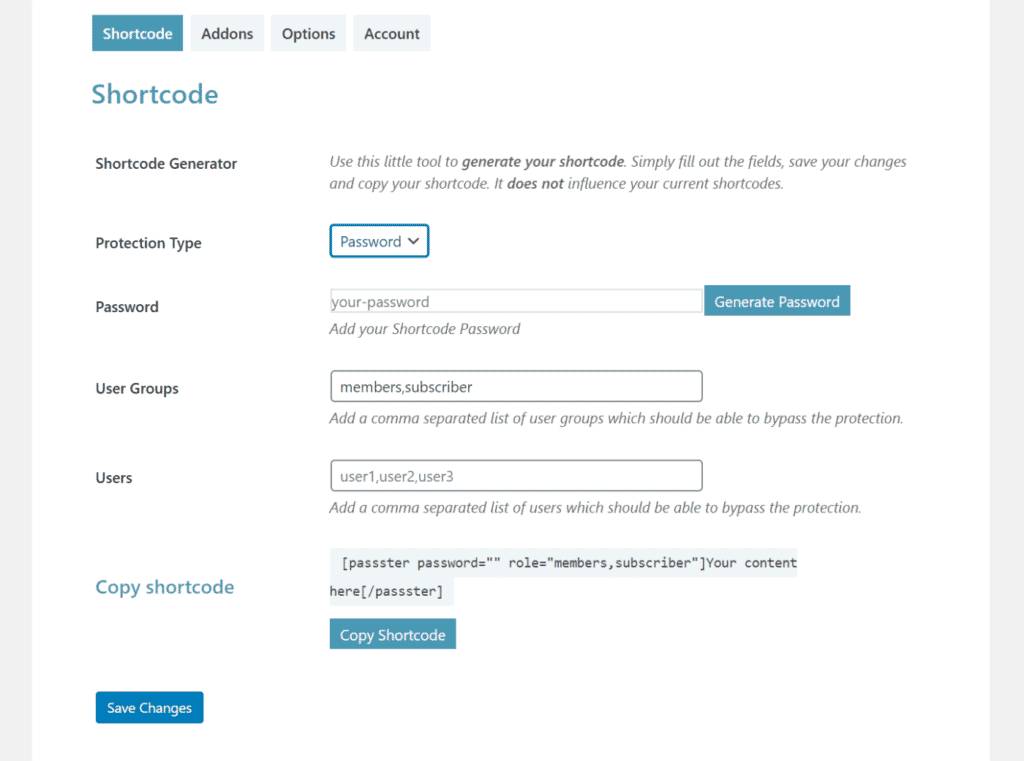
Once you click the Save Changes button, a shortcode will automatically be generated for you. Use this in posts or pages to grant specific user roles (or users) access to restricted content.
#5: Google ReCAPTCHA
For those unfamiliar, Google ReCAPTCHA is Google’s version of CAPTCHA. Passster supports both CAPTCHA and Google ReCAPTCHA so you can choose whichever one you’d prefer to go with. This is also great for keeping your website and content secure from bots and scrapers.
Here’s what you need to do to set this up in Passster:
Go to Settings > Passster from the WordPress admin panel and click on the Addons tab. Activate the Google ReCaptcha option.

Click the Save Changes button at the bottom of the screen.
Next, head over to the Shortcode tab and set the Protection Type option to ReCaptcha.
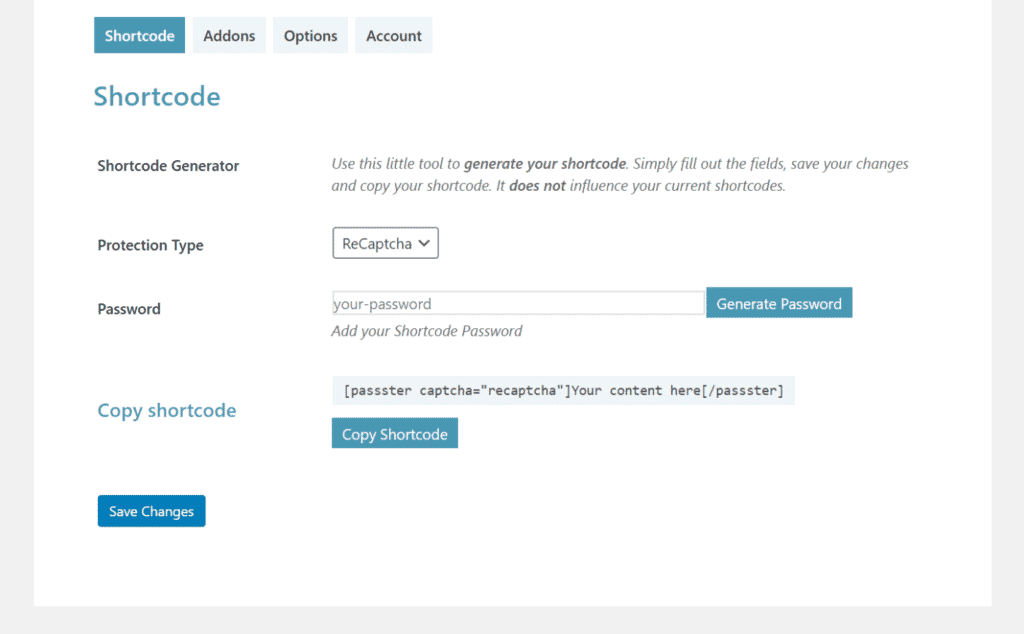
Once you click the Save Changes button, a shortcode will automatically be generated for you. Use this in posts or pages to restrict access to content.
#6: Unlock Link
If you want visitors to be able to view restricted content without having to enter a password or complete a CAPTCHA, you might consider using Passster’s unlock via link option. Passster automatically generates an encrypted link for you that lets users gain access to protected content.
This is great for when you need to give people a direct link to the protected content. You can use this to send subscribers a direct link to restricted content via email or to send prospective clients a direct link to your portfolio.
Here’s what you need to do to set this up in Passster:
Go to Settings > Passster from the WordPress admin panel and click on the Addons tab. Activate the Google ReCaptcha option.
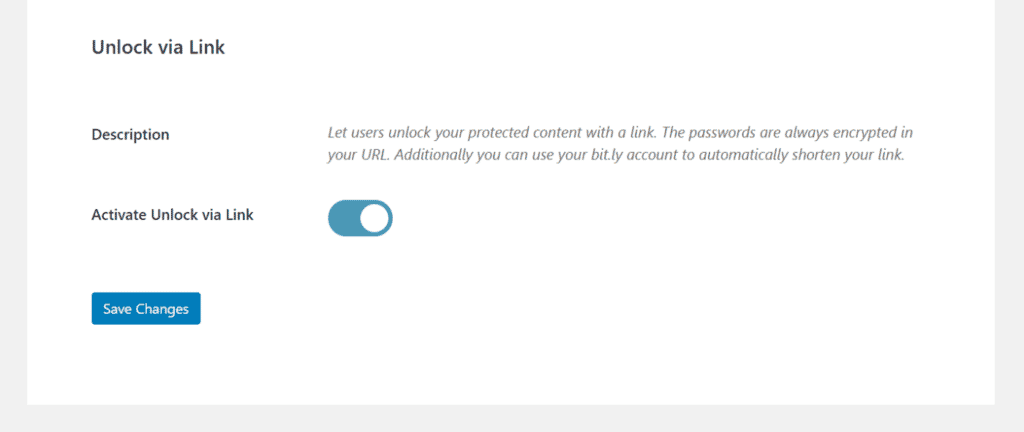
Click the Save Changes button at the bottom of the screen.
Head over to the Link tab and configure the following settings:
- Enter the slug of the page you want to restrict access to.
- Enter the password that will automatically be encrypted in the unlock link.
- Optionally, enter your Bitly access token to shorten the encrypted link using Bitly.
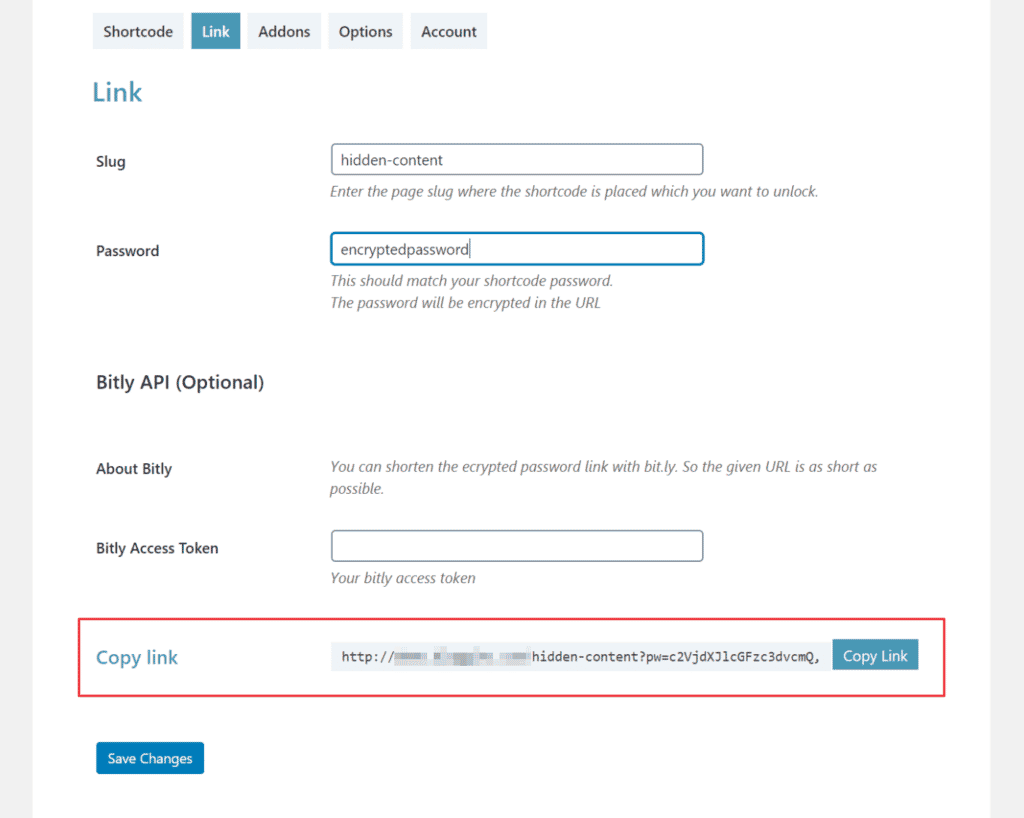
Click the Save Changes button.
An encrypted unlock link will automatically be generated for you. You can share this with visitors, subscribers, or clients to give them direct access to the restricted content.
Conclusion: Restrict Content
Passster makes it incredibly easy for WordPress users to restrict access to content. The best part is that you don’t have to mess around with a complex membership plugin.
To recap, you can use Passster to restrict access to content in WordPress using:
- Simple password protection
- CAPTCHA
- Multiple passwords
- User role protection
- Google reCAPTCHA
- Encrypted unlock link
Passster
Protect your entire website, entire pages, or just parts of your content with one or more passwords.